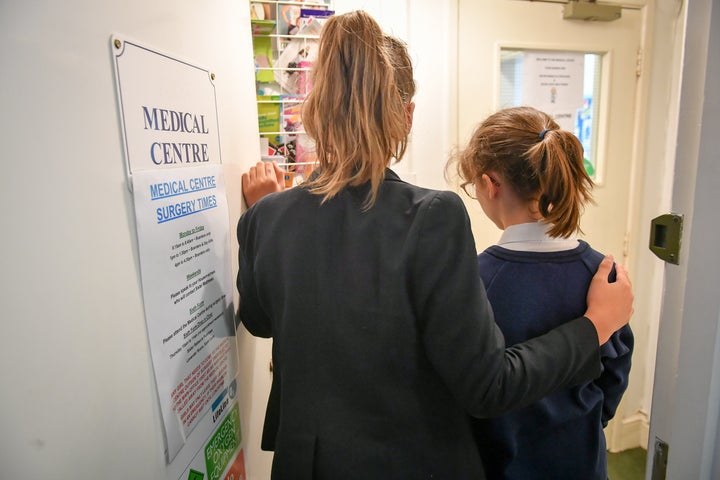School nurses are at their lowest number in at least nine years, with staff quotas for schools in England down a quarter since 2010, new figures show.
The number of school nursing staff hit 2,248 in June – the lowest figure since at least 2009 – amid concerns over “massive financial pressures” on local councils who fund the service.
This is down 26% from the highest figure in January 2010, when there was a total of 3,026 nurses working in schools, quarterly NHS workforce data for England shows.
The figures include nurse consultants, modern matrons – responsible for driving up standards of care, nurse managers, qualified school nurses and first and second level nurses.
Qualified school nurses were at their lowest levels in April this year, with figures showing there were 1,012 – an 11% drop from a high of 1,140 in September 2011.
The number of nursing staff in schools has been on a steady decline since the start of 2010.

School nurses administer care to students aged five to 19, from primary school education to college level.
They are responsible for delivering initiatives which improve the health of children and young people – including lowering levels of childhood obesity, teenage pregnancy, and the prevalence of chlamydia, according to the Royal College of Nursing.
School nurses are also vital in supporting mental health among students.
The drop has sparked concerns of increased pressure on teaching staff to take on responsibility for work usually carried out by medical staff.
Paul Whiteman, general secretary of the National Association of Head Teachers said: “In the past, schools could rely on the support of the school nursing service. They could be prevailed upon to take care of the medical needs of pupils, whilst teaching staff took care of their educational needs.
“In many local authorities, the school nursing service has been virtually disbanded. This has created unacceptable pressure on staff and is severely limiting the ambitions we have for pupils. Teaching practitioners are now having to do more of the work that should really remain with the medical profession.”
He added: “The work is essential, but it’s taking time away from our prime responsibility – teaching. And the only people who lose out then are the young people themselves, and that can’t be right.”
The figures follow warnings last month from teaching unions of a mental health crisis among students.
A Children’s Society report released in August found that close to one in four girls and nearly one in 10 boys aged 14 had self-harmed.
One out of the 11,000 respondents told the charity that they felt there was “help for young people but not the right kind of help”.
The charity has called for “urgent action” to plug the funding gap.
Richard Crellin, policy manager at The Children’s Society, said: “At a time when children’s well-being is falling, the support available to children at school should be increasing, not reducing.
“Our latest Good Childhood Report last month found that one in six children, including nearly a quarter of all girls, had self-harmed in just a year.
“School nurses play a crucial role in helping children with mental health problems and ensuring they get the support they need. It’s not surprising that numbers are falling given the massive financial pressures on local councils across England.
“Urgent action is needed to ensure all local authorities can fund quality school nursing, but given the scale of the mental health challenge facing schools we are also calling on the government to ensure every child in secondary school has access to a counsellor.”
The Royal College of Nursing’s Best Start report out last year expressed concerns about the fall in school nurses and health visitors.
It stated: “The subject remains a priority for the RCN because we are seeing a continued downward trend in health outcomes for children and young people compared with other countries.”
Fiona Smith, professional lead for children and young people’s nursing at the RCN, said: “The number of school nurses in England has plummeted by 25% since [June] 2010, leaving children without the care they need.
“Children’s health services are the frontline defence against childhood obesity and poor child mental health. School nurses provide vital support to young people and intervene before problems escalate. But nurses report they are understaffed, unable to take breaks and feel the care they give is compromised.
“As public health funding continues to dwindle, the government risks turning back the clock on children’s health – it must provide school nurses with the investment they need.”
HuffPost UK has contacted the Department of Health for comment.
Useful websites and helplines:
- Mind, open Monday to Friday, 9am-6pm on 0300 123 3393
- Samaritans offers a listening service which is open 24 hours a day, on 116 123 (UK and ROI - this number is FREE to call and will not appear on your phone bill.)
- The Mix is a free support service for people under 25. Call 0808 808 4994 or email: help@themix.org.uk
